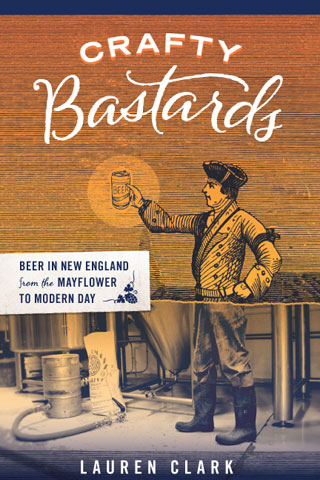February 14th, 2010
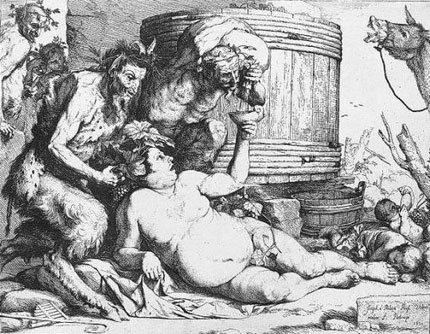
A fellow drinker said recently, “I just discovered you should never input your drinks into a calorie-counter app. No wonder I look like Santa Claus.”
Boozing makes you fat, right? Yes. No. Maybe. When it comes to alcohol and body weight, things get weird. That’s according to the scientific and medical literature out there on the web — a confusing hodgepodge of sites looking at alcohol consumption mostly from fitness, diet or addiction perspectives, or sites representing incompatible agendas, i.e. MADD vs the Distilled Spirits Council of the United States, or the NIH vs the BATF. Of course, there are plenty of dense scientific articles on PubMed, but making sense of those and coming to any useful, real-world conclusions is a task I would only undertake for a lot of money.
In a way, it seems simple: alcohol has calories, and if you consume too many calories without burning them, you’ll gain weight. It’s funny how many people don’t realize that alcohol itself, aside from sugary mixers or carbs in beer, is calorie-rich. In fact, pure ethanol has 7 calories per gram compared to 4 for carbs and protein and 9 for fat. Of course, we don’t drink pure ethanol; we drink drinks. So here are some more relevant numbers based on the caloric content of various alcoholic beverages (according to CalorieKing) and recipes that represent the sort of cocktails that drinkbostonians are likely to consume.
- Fort Point (among the many “Manhattan variations” out there): 2 oz rye whiskey, 1/2 oz Punt E Mes, 1/4 oz Benedictine: 174 calories.
- Margarita: 2 oz tequila, 1 oz Cointreau, 3/4 oz lime juice: 223 calories.
- Martini: 2 oz gin, 1 oz vermouth: 173 calories.
- Gin and tonic: 143 calories.
Now, for comparison’s sake …
- Coca Cola (12 oz): 143 calories.
- Narragansett (12 oz): 152 calories.
- Sierra Nevada Bigfoot Barleywine (12 oz, 10% abv): 330 calories.
- Red or white Wine (5 oz): roughly 120-130 calories.
So, if you take the generic, 2,000-calorie daily intake on which standard nutrition labels are based, and you add up the two Fort Points, three glasses of wine, and beer nightcap you might consume on a night off — roughly 875 calories — you have 1125 calories left for food if you want to avoid gaining weight. Which means eating like a supermodel without any of the financial benefits. Depressed yet?
But wait. “Scientists have not been able to tie alcohol consumption consistently to weight gain,” according to this article on ShapeFit. Huh? It continues, “Researchers have also found that heavy drinking reduces body fat, but still others point to evidence that it raises the risk of becoming overweight or obese. There may never be a simple answer, since there are so many variables.”
Oh, those pesky variables. You’ve got to, for instance, stack up your eating patterns against your drinking patterns. Do you tend to eat — and eat a little more than you normally would — whenever you go out drinking? Or does your boozing often replace food and other types of caloric beverages? Also: Are you genetically programmed to be an alcohol-metabolizing machine? And perhaps the peskiest variable of all explaining why there “may never be a simple answer” to what role alcohol plays in weight gain: “People in studies are prone to under-report how much they drink, rendering many findings unreliable.”
Ah, yes. Under-reporting one’s booze intake is a rich, American tradition. It’s not surprising, given that our official definition of “drinking in moderation” is one drink per day for women, two for men. That’s not moderate, that’s puritanical. It’s like when nutritionists say that a serving of meat should be no bigger than a deck of cards. Oh, I guess that means I’m splitting this porterhouse steak with my date, plus the family of four sitting next to us.
My advice? Ditch the calorie-counting app, get some exercise, and pick up the recently reissued Drinking Man’s Diet, originally published in 1964. The guy who wrote it, Robert Cameron, died slender last year at age 98.
Permalink | 8 Comments | Filed under Books & resources | Tags: alcohol, calories, health, weight gain
February 7th, 2010

It’s campaign season for drinkboston again. For the second year in a row, this site is up for Best Blog in the Boston Phoenix’s “Best of Boston” readers’ poll. Last year, drinkbostonians conceded the race to the band-interviewing puppet podcaster Silly Gillman. This year, we’re up against the political commentators Blue Mass Group, the music-savvy Bradley’s Almanac, the local fashion photo album ClickClash, the college radio scenesters On A Friday, and the “all Boston, all the time” Universal Hub.
All worthy contenders. But as worthy as a blog about the drinking life in Boston? To the ballot, my fellow barflies. And for the love of god, don’t forget to click the “Finished” button after you’ve voted (and don’t forget to cast ballots for your fave bars and bartenders!). Here’s the fine print from the online ballot listing all categories:
FINISHED VOTING FOR YOUR FAVORITES? Please be sure you have finished selecting all the categories you wish to vote for, then click the link below to finish the voting process. We accept one vote per user per category a day.
I’m envisioning the victory party now…
Permalink | No Comments | Filed under drinkboston in the news | Tags: Best 2010, blogs, Boston Phoenix, readers' poll
February 1st, 2010
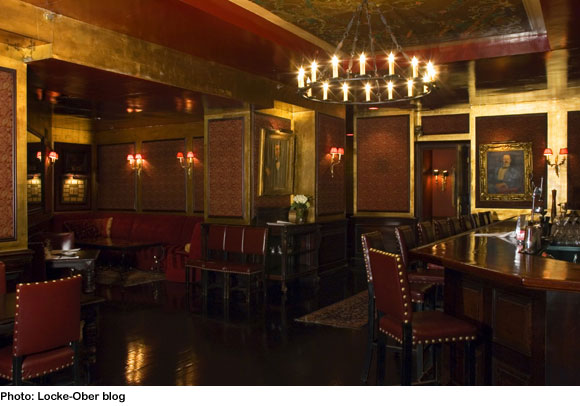
Established: 1875
Specialty: Wine, Martinis, Manhattans
Prices: High
Atmosphere: “Locke’s has no peer and few rivals. And the top-hatted ghosts at its bar are those great of the legendary past: Eben Jordan and Theodore Roosevelt, John Drew and Dr. Lowell. They are all drinking Ward Eights with Nick (Stuhl) and Mr. Camus and the founding fathers, Locke and Ober.” — Lucius Beebe. See Best Boston bars for address and contact info.
Oh, Locke-Ober. You’re like a politician who has been in office forever. Your stunning longevity, and all the historic moments in which you’ve played a part, give you an aura of grandeur. In your presence, people speak in hushed tones. You are an institution. But oh, how you rest on your laurels. How you favor the cronies who have propped you up and who expect things to be done a certain way. How you sometimes just seem like a decrepit, old man.
Because of the latter traits, the bar at Locke-Ober is probably the worst Best Boston bar. I am conflicted about the place. I love going there, often on my own, ordering a Martini and a bowl of JFK Lobster Stew, and feeling like a part of Boston history. But whenever I go, I think about how much better it could be.
I am far from being a regular — I don’t have that kind of money, and it’s not the kind of place where I run into people I know — but from what I’ve observed, the bar experience doesn’t come near the quality of the dining room experience. Locke-Ober is famous for its waiters who have worked there for decades. I notice that when they come to fetch a drink order at the bar, their poise and professionalism usually stand out in contrast to that of the bartenders. The bar seems to lack such elder statesmen.
Not that tending bar at Locke-Ober should require only elders, or men. In 2001, Lydia Shire took over the kitchen at this male-dominated institution (it took until 1970 for women to be admitted to the dining room!). She updated the food to meet contemporary fine-dining standards while ensuring the quality of classic Locke-Ober dishes like Dover Sole and the abovementioned stew. My dream is for someone to swoop in and similarly improve the bar. I mean, doesn’t it violate some city statute that the place that invented the Ward Eight makes perhaps the worst example of that cocktail in Boston? Crown Royal, sour mix and cheap grenadine — on the rocks. Yikes. Recently, someone ordered a Martini with a twist and got a dried-out, pithy peel that had been cut hours before. And the service at the bar is decent but lacks that special flourish you expect to find at the city’s oldest and most famous fine restaurant. It seems obvious that Locke-Ober’s dedication to excellence should apply to bartending, but the management has yet to subscribe to that idea.
Nevertheless, I’ll keep going back to toast the top-hatted ghosts, and urging history-minded visitors to do the same, as long as the place is around. I am hopeful that progress can happen, even at Locke-Ober.
Permalink | 26 Comments | Filed under Boston bars | Tags: Boston history, Locke-Ober, Lucius Beebe, Ward Eight
January 25th, 2010
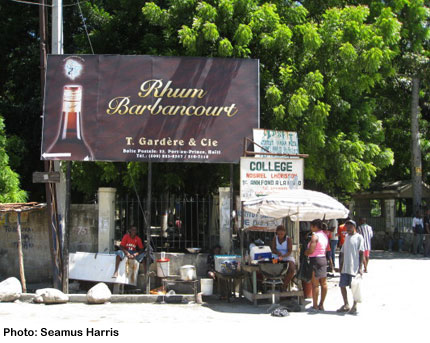
» HAITI. Like a lot of people responding to the needs of disaster-striken Haiti, I’ve been texting donations to the Red Cross, over-tipping Creole-speaking cab drivers, and ordering Haitian rum (or rhum) at bars. Recently, Drink joined several bars across the country in fundraising for Haiti by creating a menu of drinks using quality rhums agricoles and donating some of the proceeds to Doctors Without Borders. If you’re near Fort Point this week, pop by and raise a glass to an urgent cause.
» BENEDICTINE. Congrats to Jackson Cannon of Eastern Standard for being one of five finalists from around the country in Benedictine Liqueur’s “Alchemists of Our Age” cocktail contest. The contest, which marked the 500th anniversary of the French herbal elixir, announced its winner earlier this month: Damon Dyer of Louis 649 in New York City. The finalists, along with their cocktails, are featured in the January 2010 issue of Esquire. Check out Boston Herald writer Julia Rappaport’s blog post about Boston bartenders and Benedictine, and Dyer’s and Cannon’s recipes below.
Monte Cassino
Damon Dyer
3/4 part Benedictine Liqueur
3/4 part yellow Chartreuse
3/4 part fresh lemon juice
3/4 part Rittenhouse Rye
Shake, fine-strain into a chilled coupe (or small cocktail glass). Lemon twist garnish.
Vincelli Fizz
Jackson Cannon
1 egg white
1 1/2 part Benedictine Liqueur
1 1/2 part house-made rose vermouth
1/2 part fresh squeezed lemon juice
Dry-shake above ingredients to emulsify. Add ice and shake again until well chilled. Pour into a coupe glass. Top with 1 ounce Champagne. Garnish with flamed madjool date essence. Proportions to be adjusted as needed for variations in vermouth and citrus.
» IRISH WHISKEY. My friend Lew Bryson, a beer and spirits writer based in PA, recently called to pick my brain about Irish whiskey. We both admitted being confounded over the assertion (made by Spirit Journal editor Paul Pacult, among others) that Irish is the fastest-growing spirits category in the U.S. That’s because neither of us are noticing it being downed in greater-than-usual quantity, at least not in the places we drink. How is all this whiskey being consumed, we asked? As shots alongside a Guinness (my fave method)? On the rocks, like Scotch? In cocktails? We guessed one of the first two, since there just aren’t a lot of cocktails containing Irish whiskey.
I addressed that dearth recently when I brought my brother to Drink for his birthday and introduced him to the fabulous Red Breast, pot-still Irish whiskey. Misty Kalkofen gamely created a cocktail with the stuff, which was delicious and needs a name: 2 1/4 oz Red Breast Irish whiskey, 1/4 oz Punt e Mes, 1/4 oz green Chartreuse, stirred well over ice and strained into a chilled rocks glass.
» ULTIMATE BEVERAGE CHALLENGE. Speaking of Paul Pacult, he is leading the launch of the Ultimate Spirits Challenge, a judging event that aims to evaluate spirits with the “most authoritative, accurate and consistent results.” Part of the overall Ultimate Beverage Challenge, the first-ever spirits challenge takes place March 1-3 at Astor Center in New York City, followed by the Ultimate Cocktail Challenge in April. Check it out.
» SCOFFLAW. Did you know that January 16 was the anniversary of the official coining of the term “scofflaw,” for which the Scofflaw cocktail is named? And that the word came about as the result of a contest held by the Boston Herald in 1923? I didn’t either! It was one of those “I can’t believe I didn’t freakin’ know about this” revelations.
“The Scofflaw drink followed the coining of the actual term by less than two weeks,” writes Ted Haigh in Vintage Spirits and Forgotten Cocktails. “Another invention of Harry’s New York Bar in Paris, the cocktail hilariously baited Prohibition sensibilities.” Read more about it in the intro to Robert “DrinkBoy” Hess’ video about the Scofflaw. And thanks to Paul Harrington for being perhaps the first modern drinks writer to mention the history of the word and the cocktail.
» BOSTON DRINKING SOCIALS. Finally, this just in from Stuff Boston: Great Minds Drink Alike: Local booze crews give the term “social drinking” a whole new meaning.
Permalink | 17 Comments | Filed under Books & resources, Cocktails, Liqueur, Nips, Rum, Whiskey | Tags: Benedictine, Boston clubs, Haiti, Irish whiskey, Paul Pacult, rhum agricole, Scofflaw, Ultimate Beverage Challenge
January 19th, 2010
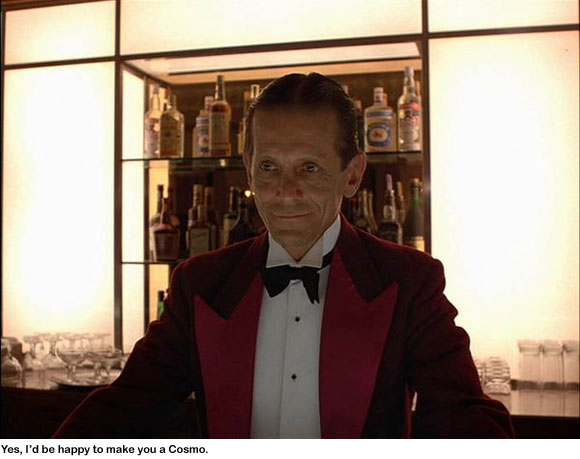
West Coast cocktail writers Camper English and Paul Clarke have sparked a debate that I can’t resist joining, because it’s oh so familiar.
A trio of recent articles by these gentlemen, and especially the comments those articles have generated, show that there is some, ah, disagreement over bartenders’ approach to customers in the world of craft cocktails.
English got things started with a piece in the San Francisco Chronicle called “Bartenders shift from lecture to nurture.” He observes that bartenders at many successful craft cocktail bars (including Boston’s Drink) are softening their attitude toward those who haven’t converted to the Church of the Serious Cocktail and are instead winning drinkers’ hearts and minds with good, old hospitality. The article generated comments ranging from this:
[Cocktail] MENUS??? What…. like Free Range BOURBON? Geeezus gimme a break…shot o’ Jack in a dirty glass thank you very much. And yeah.. the bartender works for ME. He’ll take my order and LIKE IT. Belch.
to this:
Just about every single person who commented completely missed the mark. You don’t walk into a corner liquor store in the Tenderloin if you want fine champagne and you don’t go to the K&L Wines on 4th street if you want malt liquor. Bars like the Rickhouse pride themselves on quality drinks. If you want a Cosmo there 999 other places that will make it for you. They don’t need your business. They have plenty.
English expanded on the idea in the latter comment with a follow-up post on his blog titled Why Can’t I Get a McDonald’s Hamburger at Chez Panisse? Clarke then threw his hat into the ring with Serious Cocktails: Is the Customer Always Right? He writes:
Most bartenders employ some aspect of the “Customer is always right” principle. If the ingredients are available, they will make the requested drink. But does the customer have a responsibility as well? Possibly to distinguish the types of drinks they’ll order based on the type of bar they’re visiting?
Yes, Paul. At least, the customer should have that responsibility. And it is up to mixology-minded bartenders to help the customer understand that. That means continually educating guests — most of whom don’t read cocktail blogs — about the fact that in certain places, bartending has reached a new level and that the drinks there are different. Many people, like Mr. Shot O’ Jack above, will start out thinking it’s all just a pretentious fad. But once they sample a few really well-made drinks and notice that more and more of their friends are doing the same, they’ll come around. The thing is, it always takes more time than the passionate early converts realize.
All this has happened before with food, wine and beer. It wasn’t all that long ago that lettuce was Iceberg, wine was Inglenook in a jug, and beer was Bud in a can. Anyone who clamored for more variety and better quality was considered a fussy elitist. Now, regular Joes at your average chain restaurant consume arugula, Chardonnay and India pale ale without comment.
I experienced this kind of change first-hand during my brief stint in the craft brewing industry in the late ’90s. Even though craft beer had been proliferating for over a decade at that point, people would still walk into a brewpub and order a Miller Lite. The bartender would explain that there was no Miller Lite on tap, that the establishment sold only beer that was made on the premises, and he would suggest a golden ale — milder than the pub’s other beers but still way more flavorful than mass-produced light lager. The customer would either leave or try the golden ale. If he tried it and liked it enough, he might get adventuresome later on and order an IPA or a porter. It was a process, and it didn’t happen overnight.
Did my fellow brewers and I privately snicker at those Miller Lite-ordering rubes? Yes — just as today’s craft bartenders do with the Cosmo set. But luckily for both beer nerds and cocktail geeks, the impulse to win over the unenlightened triumphs over the impulse to mock them. A little less zealotry, a little more diplomacy. Which means that, in a few years’ time, Mr. Shot O’ Jack might walk into a bar, glance at the cocktail menu without raising an eyebrow, and respectfully ask the bartender to suggest a rye for his Sazerac.
Trust me, it’ll happen. Eventually.
Permalink | 25 Comments | Filed under Bartenders, Booze in the news |





